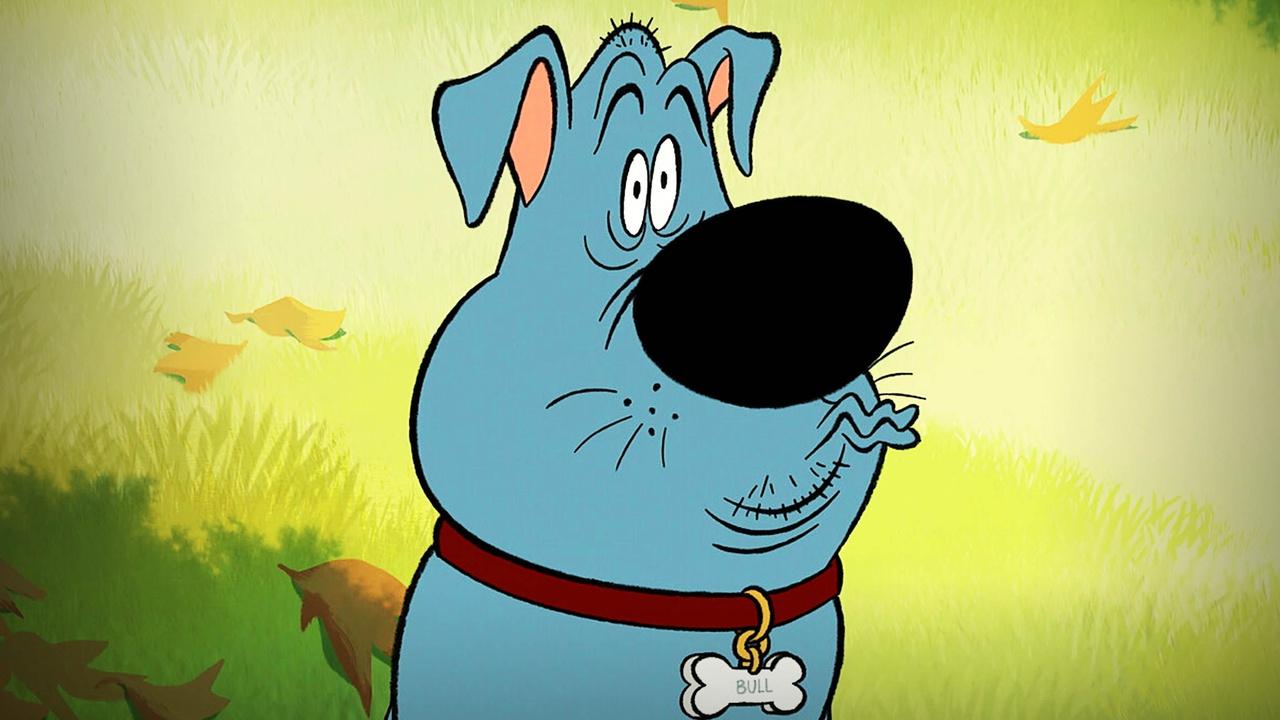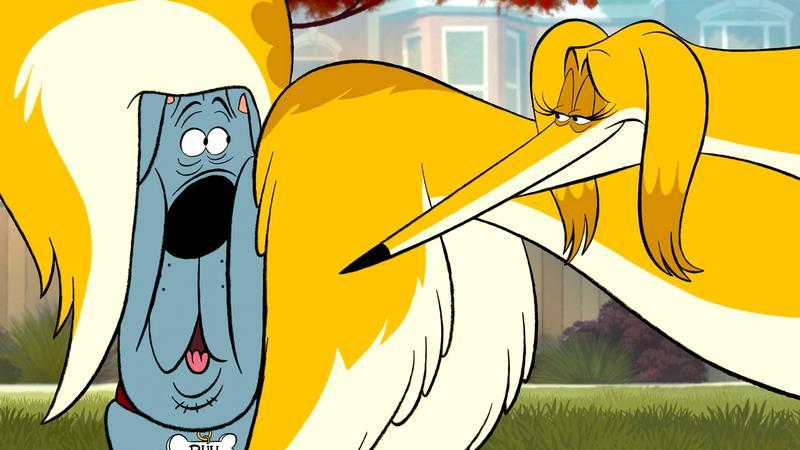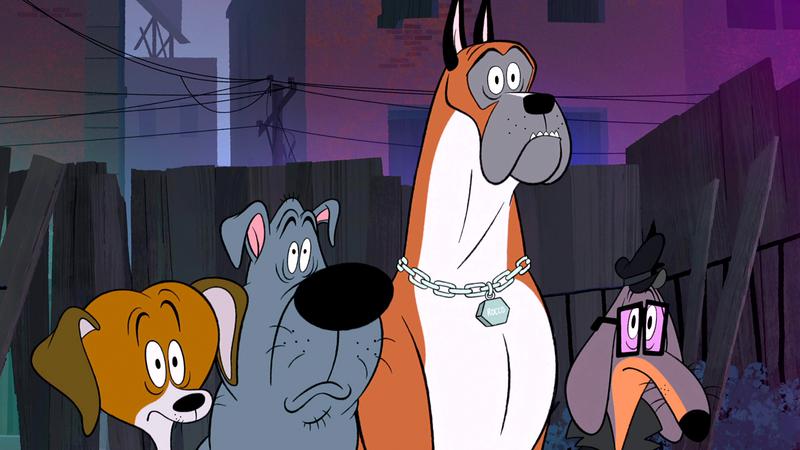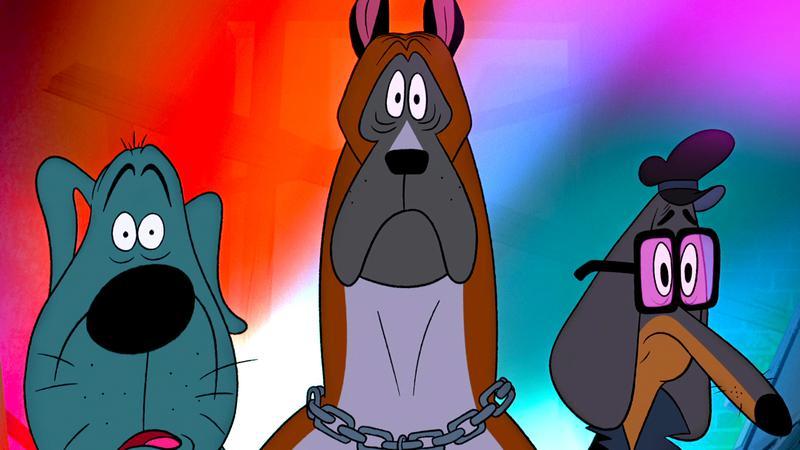
Genndy Tartakovsky is back with a brand-new animated feature film on Netflix, but it's not his normal affair. This time, it's an incredibly raunchy 2D animated comedy about the moment everyone's pets fear: getting fixed.
The story follows Adam Devine's Bull, who learns he's about to lose his balls, sending him spiraling. Joining Devine are Idris Elba (Rocco), Kathryn Hahn (Honey), Beck Bennett (Sterling), Bobby Moynihan (Lucky), and more. The Direct spoke with Fixed director and writer Genndy Tartakovsky in an interview, where he had lots to say about his new film.
Tartakovsky admitted that, as raunchy as his new animated Netflix film is, "A few things got cut out because they felt gratuitous." He explained how they used to have "This big coyote fight where all the dogs bit the coyote's balls, and that's how they escaped."
The filmmaker also detailed how he "Was originally in the movie also, as a Russian husky, like a Siberian Husky, but with a full-on Russian, thick accent, and it was just too much."
When it comes to how raunchy Tartakovsky wanted to get with the film, he teased that "The third act [is] as far as I wanted to push it," though it's a moment that "operates on so many levels" and "gets the laughs through from start to finish."
"For this to stand out, we had to push the envelope here and there," the director added, noting that they wanted to "Have moments that people want to talk about."
The entire interview can be read below. Fixed is streaming on Netflix. Another hit animated Netflix film, K-Pop Demon Hunters, is also making waves across pop culture with its derpy blue tiger.
Genndy Tartakovsky Reveals What Became Too Much for His Raunchy Film

"A Few Things Got Cut Out Because They Felt Gratuitous."
- The Direct: "It is so incredibly raunchy, this film, and when it comes to thinking about what to ask you, my thoughts just immediately went to: What was too much? What things did you maybe try to put in there that, either Netflix or yourself, you were just like, maybe, let's not?"
Genndy Tartakovsky: I pushed myself beyond because I think, honestly, my normal space of what I like is probably a little less raunchy, right? Probably, like, 'Dumb and Dumber.' I love, just the comedy in that. It hits the wheelhouse, Mel Brooks, all those kinds of things. And so I knew, though, for this to stand out, we had to push the envelope here and there. Maybe not through the whole thing, but you got to have moments that people want to talk about.
And I guess I felt that everything if I watch a 'South Park' episode, I feel like they go way further than what I did. And so I guess in my mind, I thought like, oh well, everybody's ready for this, right? And then when we started showing it, people were like, 'Whoa!' And so maybe they weren't quite ready, but they are now, and so I think— I'm not the type of artist or animator that I'm like, 'Oh, let me see if I can put a penis drawing and hide it in here or something.' I was never about that.
For me, it's if I can get a character, if I can get a laugh from a physical action, or from a character-motivated scene, that's the goal for what we were doing. And so I feel like the climax scene, basically, in the third act, that's as far as I wanted to push it. And that one operates on so many levels, right? And then it gets the laughs through from start to finish, basically...
A few things got cut out because they felt gratuitous. We used to have this big coyote fight where all the dogs bit the coyote's balls, and that's how they escaped. And that was maybe one ball too much.
- The Direct: "With that raunchiness, how did that inform and influence the animation itself in how you approached the style of the film?"
Tartakovsky: It really didn't change much at all. [It's] the style that I loved and I grew up on, and what's the most natural to me is the style this kind of, you know, take savory, without the big, you know, bug-eyed takes and maybe Chuck Jonesy, Clampett Warner Brothers style, and it fits very well into what we were doing. And so it was very natural and easy, that's the thing.
And because I had all these amazing animators that are familiar with the style, and we did the character layouts, so we kind of did this pre-posing of how we wanted the characters to look and their expressions. It was this very organic process. It was just getting the story right and making sure the jokes are landing, and the timing and the pacing of their overall movie. That's always challenging. But the animation was just like a breath of fresh air.
And especially for the animators, who are, you know, I feel like the 2D animators now are like gypsies. They're going from project to project. There's not really a big home for them. Nobody's doing it as much. And so when they, some of them are Disney trained, some of them are more from an independent background, and they got this material, and then they're able to explode right like they've never done anything like this. So it's taboo, but at the same time, it's super fun, because they never had a chance to animate this freely.
Choosing the Right Dog Breeds for Fixed

"When You Think About It, It's Actually Pretty Simple..."
- The Direct: "The cast of characters is eccentric, but I'm curious as to how you guys work to figure out what breeds of dogs to use and kind of make your main cast. What was the choice there, or what was that process like?"
Genndy Tartakovsky: I mean, when you think about it, it's actually pretty simple, because you want to, let's say, you want a tough dog, like for Rocco, right? It's going to be a boxer or a pit bull, right? They kind of epitomize that kind of toughness. So that's easy.
I knew Bull was always going to be this weird, overweight Weimaraner type of mix, right? Lucky was going to be kind of a more generic mutt, and Fetch was kind of a nerdy dog, and so—You know, what I mean? You just kind of feel [what] fits.
And then Honey was a show dog, so we wanted her tall and beautiful, and so Bourgeois or an Afghan would work with the long, beautiful hair, right? So it's kind of like the dog personalities are already there, and so you just have to make sure that they work with the human personalities. And then dogs look like people anyway. The dog you pick kind of is a mirror to you.
- The Direct: "One of my favorite breeds is a husky. And there was a quick Husky joke in there that I appreciated."
Tartakovsky: There was. Well, I cut myself out. I was originally in the movie also, as a Russian husky, like a Siberian Husky, but with a full-on Russian, thick accent, and it was just too much. It didn't fit quite right.
Genndy Tartakovsky on How His Experiences With Dogs Fueled the Movie

"They Just Kind of Feed Your Imagination."
- The Direct: "There's so much about the movie that clearly does come from a personal place, with experiences shared by not only you, but I assume the whole team, when it comes to, like, pets and all that. So how did some of those life experiences really feed into both the jokes and the story as a whole that you were telling?"
Genndy Tartakovsky: Well, I think the dog stuff is definitely, you know, having dogs for 20 years now, like I never had them as a kid, but I had them as an adult, and then you see so much, right? They just kind of feed your imagination. And a lot of times I would do the voices for the dogs, right? Like, pretend what their voice would be.
And, like, we just got a new dog a year ago, so we were trying out different voices and seeing what kind of voice would work well for her. And then you see their personalities develop. And a lot of the dog behavior jokes, like, why are they smelling the same spot over again?
You know, if I take the dog for a walk, and then sometimes they'll have three poops, and I only have two bags, and I'm like, Oh no, and one poop is gonna be just left there, and I feel so bad about it. So, just things like this informed a lot of the dog humor.
Fans of R-rated animated projects should be sure to check out DC Studios' Creature Commandos, which will add more superheroes to the lineup in Season 2.












